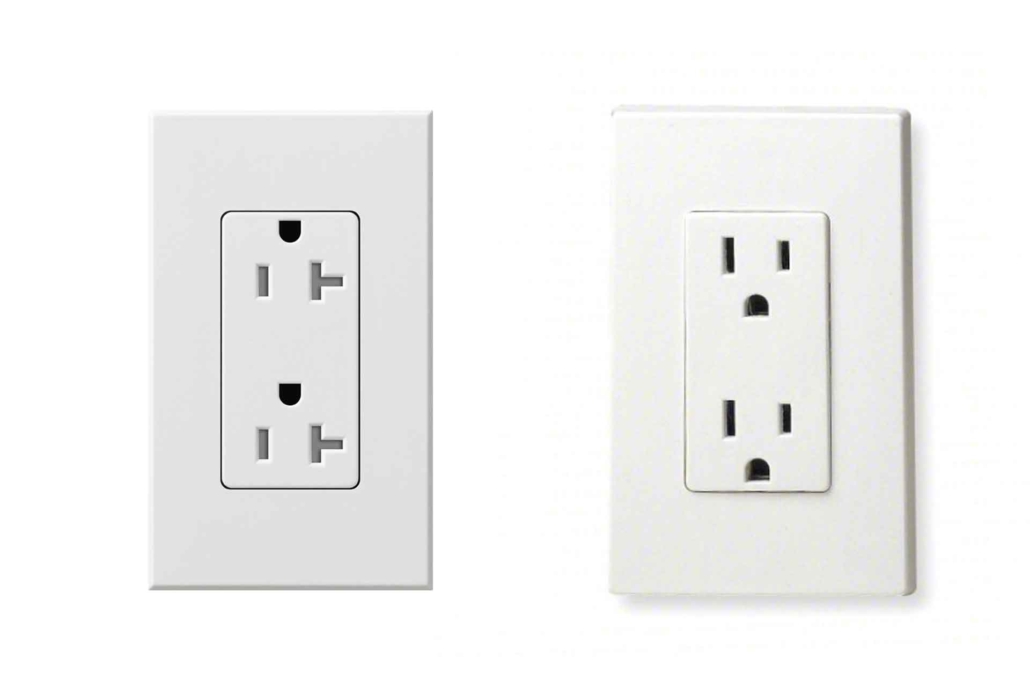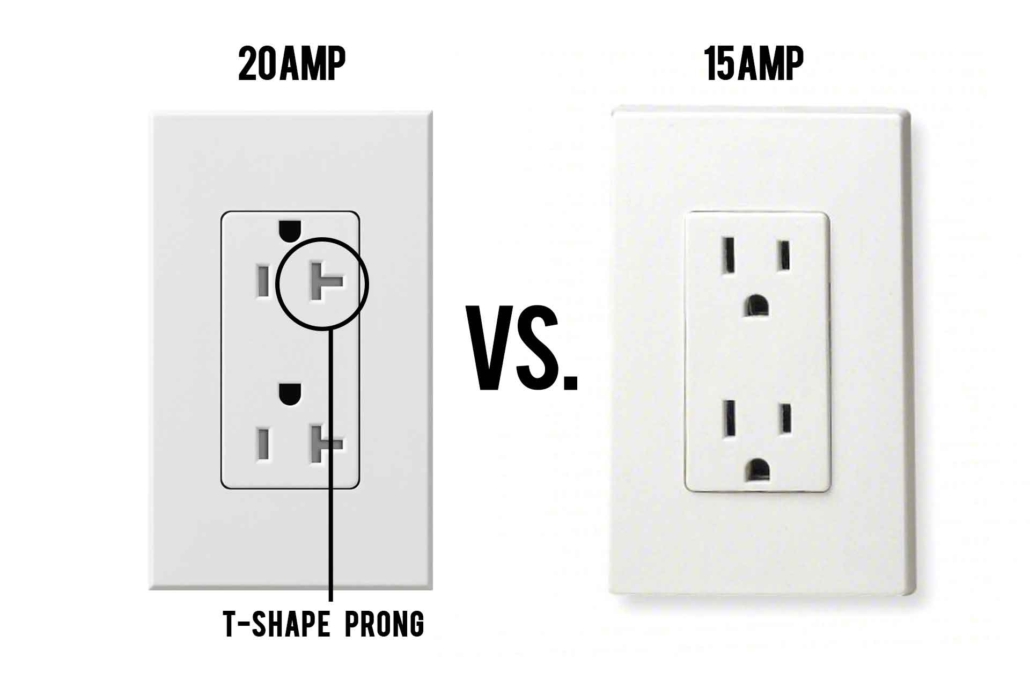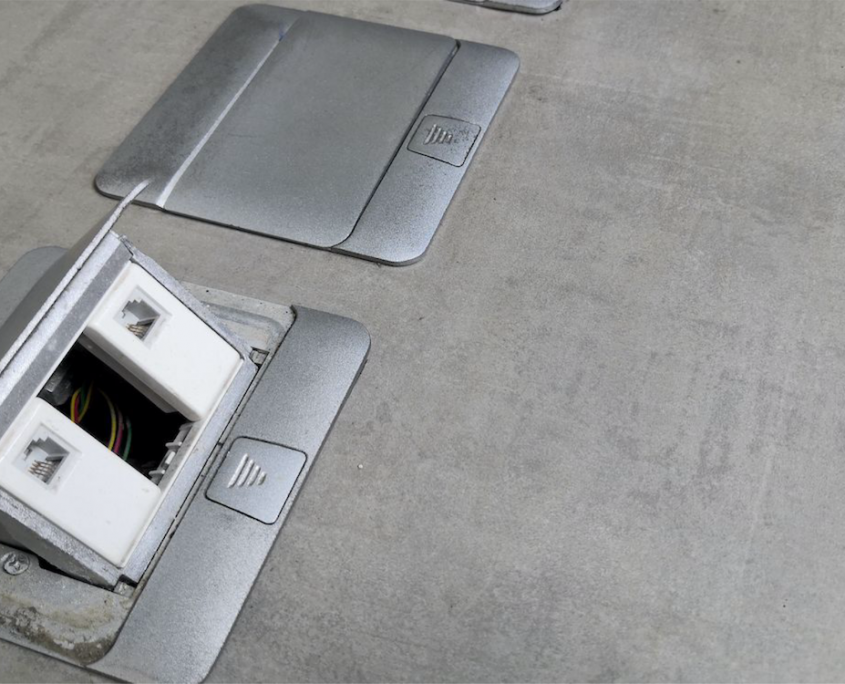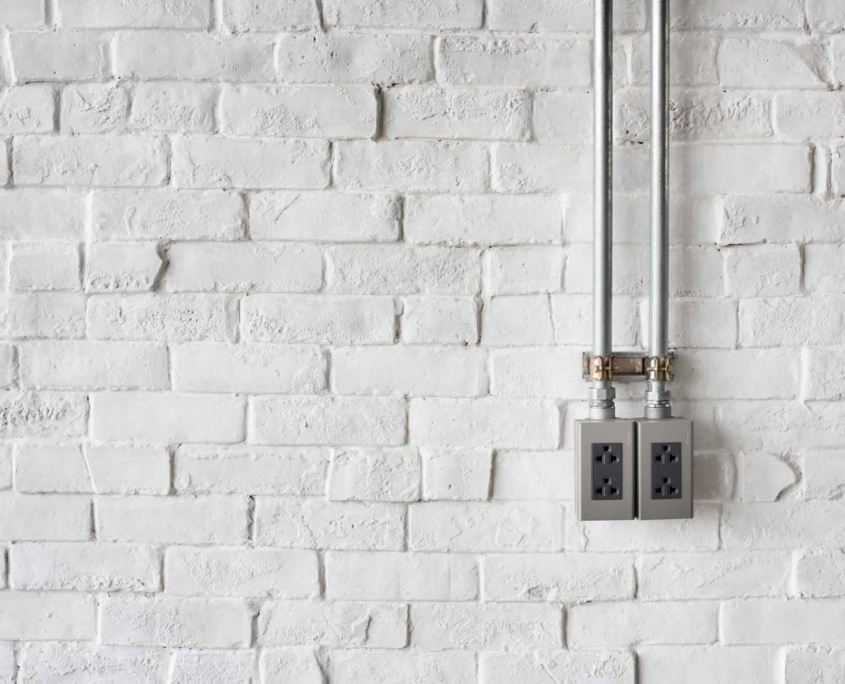15 Amp vs 20 Amp Outlet: What’s The Difference?
The majority of households in the U.S. use 120-volt electric circuits that allow both 15 amp and 20 amp current intensity. Due to this blend, it is important to know what you are working with whenever you need to install new appliances, and thus to understand the 15 amp vs 20 amp outlet debate.
Turning to a certified electrician is always the safest and smartest way to go when making any updates to your electric network, but it’s always helpful to gain knowledge of some basic concepts. For instance, it is crucial that the amperage of an outlet doesn’t exceed the amperage of the circuit it uses. As a result, both 15 amp and 20 amp electrical sockets can be installed to a 20 amp circuit, yet only 15 amp receptacles should be used for 15 amp circuits. Check out this article about overloading circuits here.
How To Tell Them Apart: 20-amp Receptacle Versus A 15-amp Receptacle
In case you have trouble with installing new devices in your home, the first thing you need to do is check the type of the outlets in the electric network, see if you’re dealing with a 15 amp or 20 amp outlet. Since 15 amp receptacles also work with 20 amp circuits, most of the American houses are built with these. They have two slots and a grounding hole in the form of U as seen in the photo above.
Receptacles with a 20 amp current have a similar design to the 15 amp ones, with a single exception: an additional horizontal slot, which forks from one of the vertical slots. This enables 20 amp plugs to be inserted directly into the outlet. Large consumers, especially kitchen appliances, such as microwaves, blenders and toasters, need a dedicated 20 amp circuit, to ensure a constant energy flow, which means they cannot share the circuit with other devices.
The simplest way to establish the intensity of the household’s electric circuit is to check the breakers and/or fuses in the panel. A 15 amp circuit normally includes 14-gauge wires, while 20 amp circuits use 12-gauge or 10-gauge wires. If you’re unsure which is which, look for a label on the wire.
15-Amp & 20-Amp Outlets: Uses & Applications
If the two circuits, respectively outlets with the different amperage do not seem too dissimilar so far, there is a clear, and most of the time regulated, distinction when it comes to their use. While still built for residential purposes, 20 amp circuits are engineered for high power current.
Even within the field of domestic consumption, there are explicit guidelines for 15 amp vs 20 amp outlet usage. In spite of the fact that practically all the houses have built-in, cost efficient 15 amp receptacles, these outlets are not suitable for all the electrical needs of a modern household. Whereas a 15 amp circuit is a fit choice for the lighting installations, it cannot cover the energy needed by kitchen appliances, for instance.
Any basic lighting setting is powered by 15 amp electric networks, whether it is a ceiling unit or porch lights. Just keep in mind to check the instructions of each equipment, to be sure that it sustains a 15 amp circuit and it does not require a lower amperage. Consequently, lights and outlets ought to be on separate circuits, so that both of them could run at maximum capacity without overloading the electric system – as a rule, it is always best to maintain the load at utmost 80%.
Kitchen equipment, on the other hand, is considered a larger consumer and therefore needs 20 amp outlets that are wired to 120-volt circuits. Sector regulations stipulate that a 20 amp outlet is set up on an individual branch 20 amp circuit, which means there is only one recipient at the end of that connection. This type of grid is issued with circuit interrupters (GFCI) meant to protect the system by shutting it down in case of overload. It’s always recommended to install several receptacles in the kitchen, especially in the countertop area.
The Bottom Line
The greatest number of household electric networks use outlets with a 15 amp rating, basically because they are cheaper than the 20 amp ones and they can also connect to 20 amp circuits. Devices that come with 15 amp plugs, like lamps or ceiling fixtures, can use either one of the electric circuits available in residential grids.
The 20 amp outlets are designated for big consumption appliances and power tools, like air compressors, so it is not unusual to find them in almost every kitchen and sometimes even in garages.
The wires from a household electric circuit can carry up to 20 amps and in most settings, there are a few 15 amp recipients that connect to a 20 amp circuit breaker. The reason behind that is to allow several devices to plug in to the same 20 amp circuit, without overloading the system. If the power usage exceeds 20 amps, the circuit breaker will discontinue the circuit and the only way to restart it is to plug out one or a couple of devices before resetting the electric network.
In the end, it is not a question of 15 amp vs 20 amp outlet, but rather choosing the best fit for your household electric needs. This includes not only the type of outlets, but also the number of circuits, the number and type of receptacles, and so on. This is why working with a licensed, experienced electrician is important.






